You’ve scrubbed your car inside and out and gotten rid of those lingering crumbs and annoying smudges on the windshield — but how are your tires doing? There’s a good chance all that wear and tear on your tires has left them in need of some extra love! Luckily, cleaning your vehicle's tires is easy and can be done in four easy steps.
Your tires are the only part of your vehicle coming in contact with the road. That means they are usually the first thing to get dirty! And while a little dirt won't hurt, what could be hiding underneath the dirt and grime just might — think nails, cracks in the sidewall, and low or uneven treadwear. Follow these four easy steps to get your tires squeaky clean to help you determine if it's time for new tires from Firestone Complete Auto Care.
To start your tire-washing process, you'll need a bucket, microfiber towels, a hose and spray nozzle, and a soft-bristled brush. For a deeper clean, use a light-duty pressure washer, a waxing mitt, and a wheel brush.
Use non-abrasive cleaning agents like dish soap, warm water, and wheel wax. If you’re curious about how to clean car tires naturally, try using a 70/30 mix of white vinegar and baking soda.
After you’ve collected your tools and materials, rinse off all the loose dirt using your spray nozzle or the lowest setting pressure washer (if you have one). Try to work the water from multiple angles — above, below, and both sides — to knock out the most grime from the interior of the rim.
After you've rinsed the tire, scrub the surface thoroughly. Begin with the tires, and move on to the wheels to avoid having tire grime drip onto a clean wheel face. With your bristled brush, scrub the tire with warm water and dish soap (about a tablespoon of soap per gallon of water). For stuck-on grime, let the soap mixture sit on the tire for a few minutes to help soften things up. Then, repeat scrubbing and rinsing as much as you need.
Then, repeat scrubbing and rinsing as much as you need.
Once your tires are glistening, you can start washing the surface of the wheel. Wet the wheel face, and use your brush with warm, soapy water to scrub everything down. If you want to apply a natural cleaning solution on your chrome wheels, pour equal parts of white vinegar and water into a spray bottle and spritz onto the wheels to melt away stains.
Use a smaller brush to tackle tougher spots on the wheels, then fully dry both the tire and the wheel with a clean, microfiber towel.
While a wax application isn’t totally necessary, it’s the perfect final step to get your tires looking their best. For maximum results, apply a cream or paste wax with a waxing mitt, and make sure to follow the instructions provided on the container. After applying the wax, give it a final polish with a microfiber cloth, and marvel at that amazing shine!
Cleaning your tires is important if you want your car to look its best! Since tires are the only part of your vehicle that touches the road while you’re driving, they can require a bit more TLC than the rest of your ride when it comes to keeping them clean.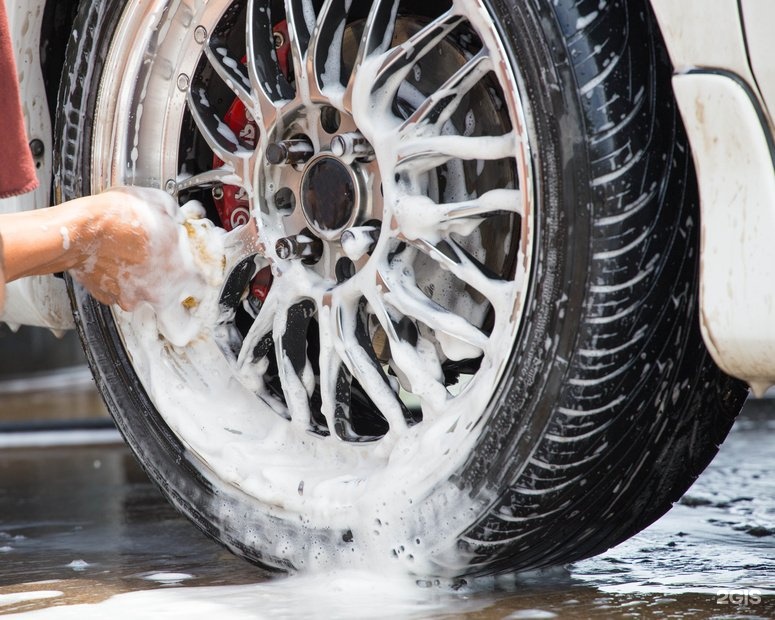
Aside from dirty wheels not being aesthetically-pleasing, cleaning your tires is also a great way to limit corrosion or similar damage. Letting dirt and grime hang out too long can cause your wheel finishes to peel and can even make the rims more porous (which could create tire pressure leaks).
Cleaning your tires on a routine, bi-monthly basis can help remove the salt, dust, and oil buildup that are a natural part of driving and keep your vehicle in top shape for years to come.
Paying attention to your tires’ health is essential in helping extend their lifecycle and keeping things running smoothly out on the road.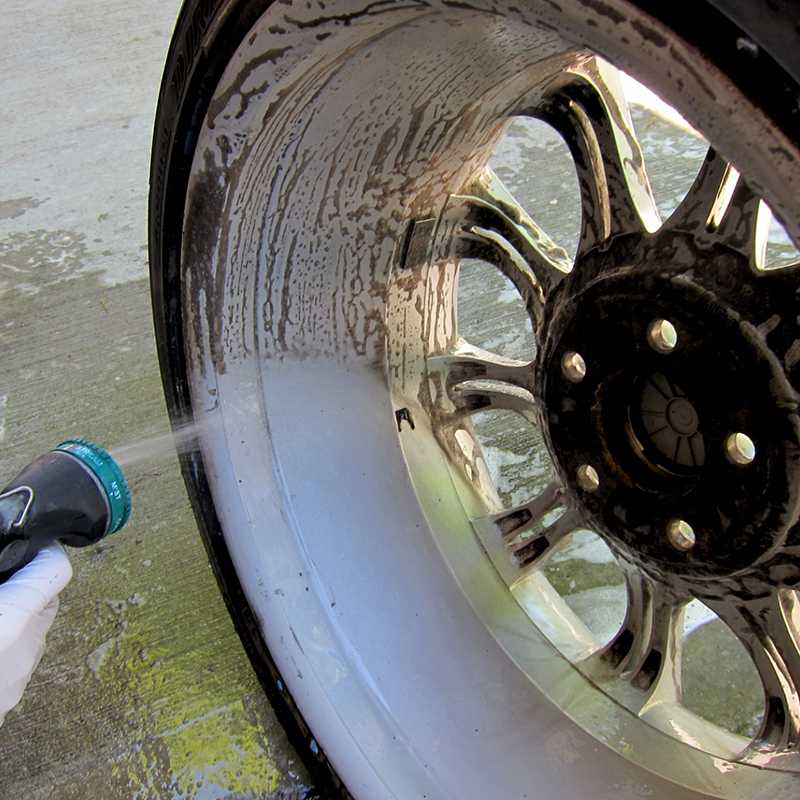 If you’re cleaning your tires and notice that any one of your tires is balding, wearing unevenly, cracking on the sidewall, or has an obstruction, it's time to make an appointment at Firestone Complete Auto Care. We provide expert tire repair, alignment services and can even help you pick out a whole new set of tires for your vehicle! Whatever your vehicle needs may be, our team is here to get your car back on course.
If you’re cleaning your tires and notice that any one of your tires is balding, wearing unevenly, cracking on the sidewall, or has an obstruction, it's time to make an appointment at Firestone Complete Auto Care. We provide expert tire repair, alignment services and can even help you pick out a whole new set of tires for your vehicle! Whatever your vehicle needs may be, our team is here to get your car back on course.
As tires, wheels, and rims are constantly exposed to contaminants from the road, the elements, and brake dust, they require special attention and the use of a specialized cleaner and a tire protectant. And you’ll also need to observe the proper way how to clean car tires to get the best results and avoid causing damage.
And if you’re also going to do car washing, you should work on the tires first.
Table of Contents
Since tires and wheels differ from paintwork in material, you’ll be needing some products specially designed for cleaning and protecting them.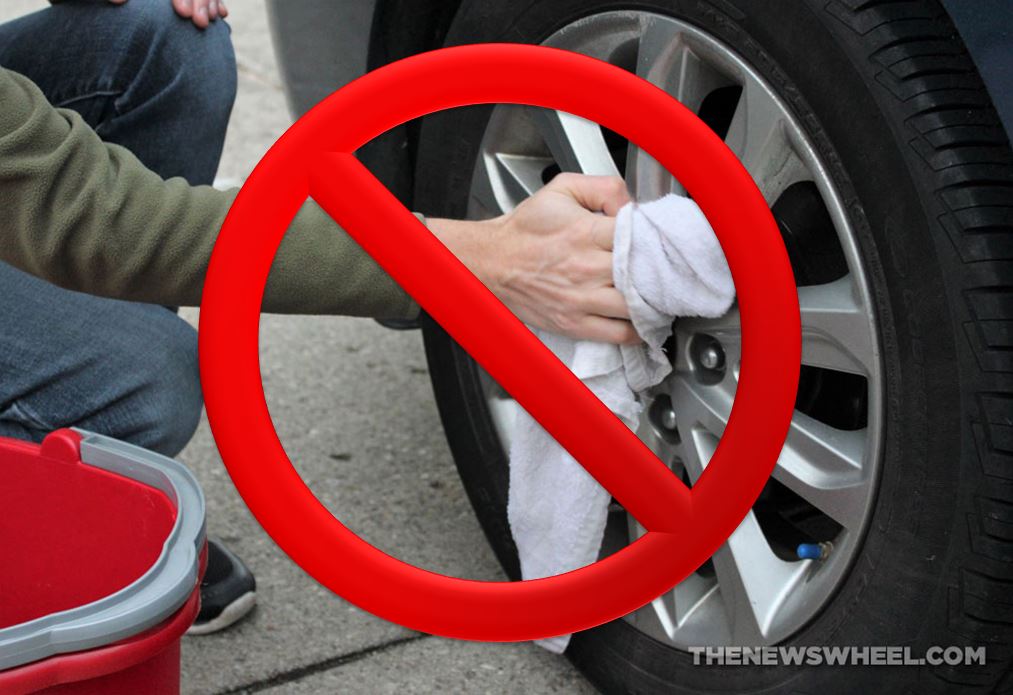
It’s also advisable to designate cleaning supplies for only the tires and wheels, such as wash brushes, buckets, towels, etc. That way you’ll avoid grinding particles that could be picked up from the tires onto the car’s body after the tire wash, which could cause scratches.
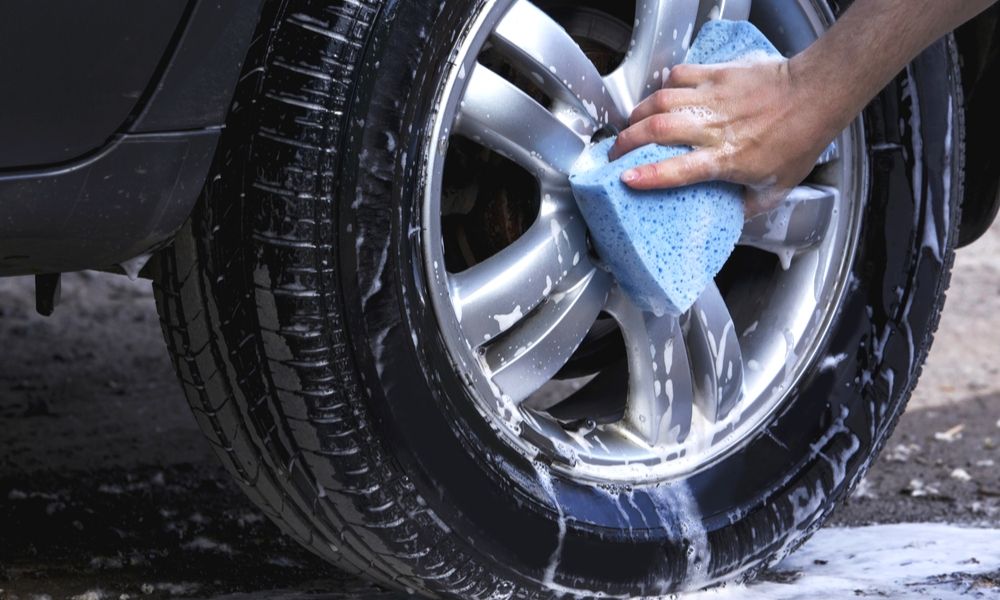
You can find a car tire cleaner that can also be used on wheels, while some shouldn’t. The latter should be carefully applied, avoiding splattering them on the wheels.
If you opt for a cleaner suited for both tires and wheels, make sure that it’s safe to use on the type of wheel you have. For example, cleaners usable safely on chrome and aluminum wheels could damage painted and anodized wheels.
The best way to clean wheels is to find a quality wheel cleaner that’s safe to use on your wheel type.
For instance, tire gel undoes and prevents the browning on tires. It also protects from harmful elements and pollutants that could cause drying and cracking. It can keep tires protected and shiny for a couple of weeks.
Tire dressing restores the black color into faded tires. This type of protectant lasts for several weeks. And there are three tire dressing group types: dressings, waxes, and sealants.
And there are three tire dressing group types: dressings, waxes, and sealants.
And, tire coating seals the surface of a tire and prevents its factory lubricants from escaping. It can also repel dirt, dust, and water with its anti-static properties. It can last as long as several months up to a year.
The tires and wheels must be washed first if you’re going to wash your entire car. Washing tires first will prevent the contaminants on them from splattering and re-soiling the car’s body. This also gives the chance to clean off any accidental splatters of tire or wheel cleaner onto the paintwork, which can be adversely affected.
Step 2: Rinse off the Loose ContaminantsFirstly, cleaning tires by rinsing off the loose dirt, sand, and mud. You can use a hose with a spray nozzle or a pressure washer set on the lowest setting.
You can use a hose with a spray nozzle or a pressure washer set on the lowest setting.
Spray water from various angles to remove as many contaminants from the rim’s interior as possible. Also, remember to keep the tires wet while you clean them to lubricate them and prevent scratching.
If you’re going to deep clean very dirty rims, removing the wheel for a more thorough cleaning would be advisable. And you should also start the cleaning from the back to the front to avoid re-soiling the front.
Step 3: Wash the TiresYou can use a car wash shampoo and dilute it as suggested by the manufacturer. Or you can also create your cleaning solution by mixing dishwashing soap with warm water at a ratio of a tablespoon of dishwashing soap to a gallon of water.
Then using a soft-bristled brush, scrub the tire with the cleaning solution. Let the cleaning solution sit on the tire for a few minutes to loosen the grime.
After a few minutes have passed, rinse the tire. Scrubbing and rinsing may be repeated as necessary.
Scrubbing and rinsing may be repeated as necessary.
Now, you can wet the wheel, then scrub it with the cleaning solution. Use a small brush or toothbrush to clean the narrow areas. After scrubbing the wheel, rinse it down.
You may repeat washing as needed. Once you’re satisfied, dry the tire and wheel with a microfiber towel.
Step 5: Use a Specialized Cleaner for the Tires and WheelsApply and let the cleaner sit on the surface as per the product’s instructions.
In the case of overspray on the wheel or paintwork, wipe them off immediately with a rag. Scrub off the dirt and grime either with a stiff-bristled brush or wheel brush.
When working on the wheels, don’t let the cleaner dry out, as it could cause permanent stains. Also, pay special attention to narrow areas where stubborn brake dust would accumulate, like the lug nuts.
Step 6: Rinse and Dry the Tires and WheelsAfter scrubbing, rinse the tire and wheel. It would be best to use a pressure washer if you have one to get rid of as many contaminants as possible. Then dry them with a cloth.
It would be best to use a pressure washer if you have one to get rid of as many contaminants as possible. Then dry them with a cloth.
If there’s still stubborn grime on the tires and wheels, redo the tire cleaning process following the product instructions.
Step 8: Apply a Protectant of Your ChoiceAs mentioned earlier in this article, different tire protectants can serve particular purposes. Choose a tire protectant that would suit your tire’s needs.
The application may vary among the different types and brands, so just follow the instructions on the product label on how to apply your protectant of choice.
ConclusionAlways remember to do these steps on cleaning tires and rims to prevent them from getting damaged and lengthen their lifespan and make your car look more presentable.
If you have any thoughts on this article on how to clean car tires, feel free to write them in the comments. Why not also share this article to help spread this helpful information on car maintenance?
In addition to washing, it is worth treating car tires with protective agents. The process is also called "tire blackening". Protective agents protect car tires from cracking, dirt sticking, give a black tint.
Let's figure out how to wash and blacken rims and tires, taking the "guinea pig" model Toyota Prius Since 2012.
Step 1. Wash the wheels separately from the body and interior. At the same time, use a separate bucket of soapy water so as not to transfer grease and dirt from the wheels to the rest of the body surface.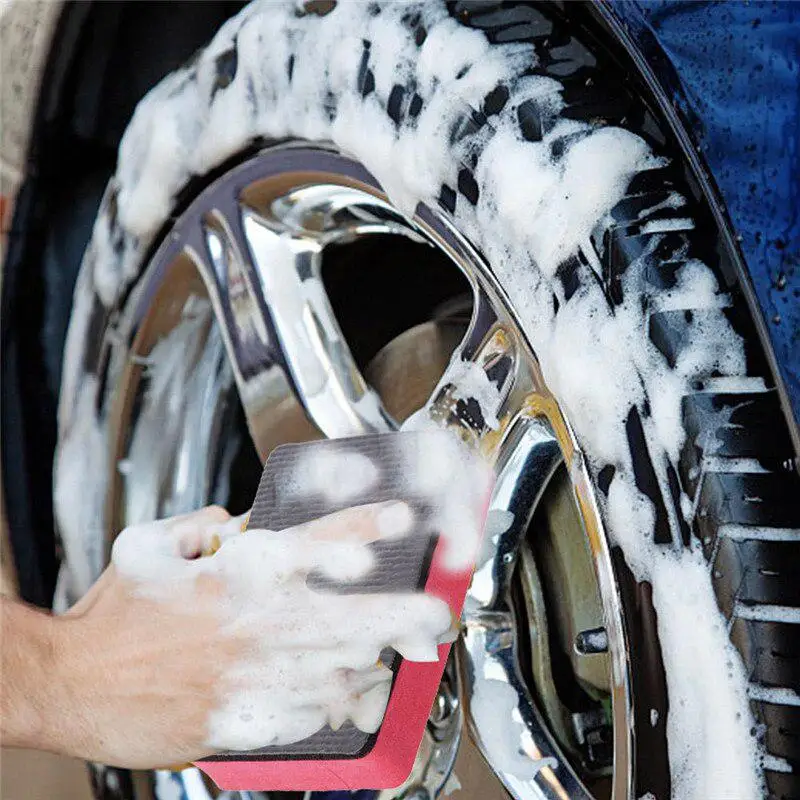
Such shampoos contain substances that prevent the sticking of dirt, tar, oil products. Apply detergent following the instructions on the package. Wheel cleaners may have a creamy consistency that must be applied with a soft cloth or sold as an aerosol to be sprayed over the entire area of the wheel rim. Separate "rubber blackeners" are sold for tires. They come in the form of aerosols, which do not need to be washed off after application, they themselves drain along with the dirt. There are liquid ones that need to be washed off after application. There are combined detergents for tires and wheels, their action is ineffective.
Step 3. Moisten the wheels and scrub thoroughly with a stiff (not iron) bristle brush. Make sure you flush the area where the brakes are located, if you have access to them. Along with road dust, brake pad dust accumulates in the gaps of the rim, so this place is most sensitive to corrosion from accumulated dirt.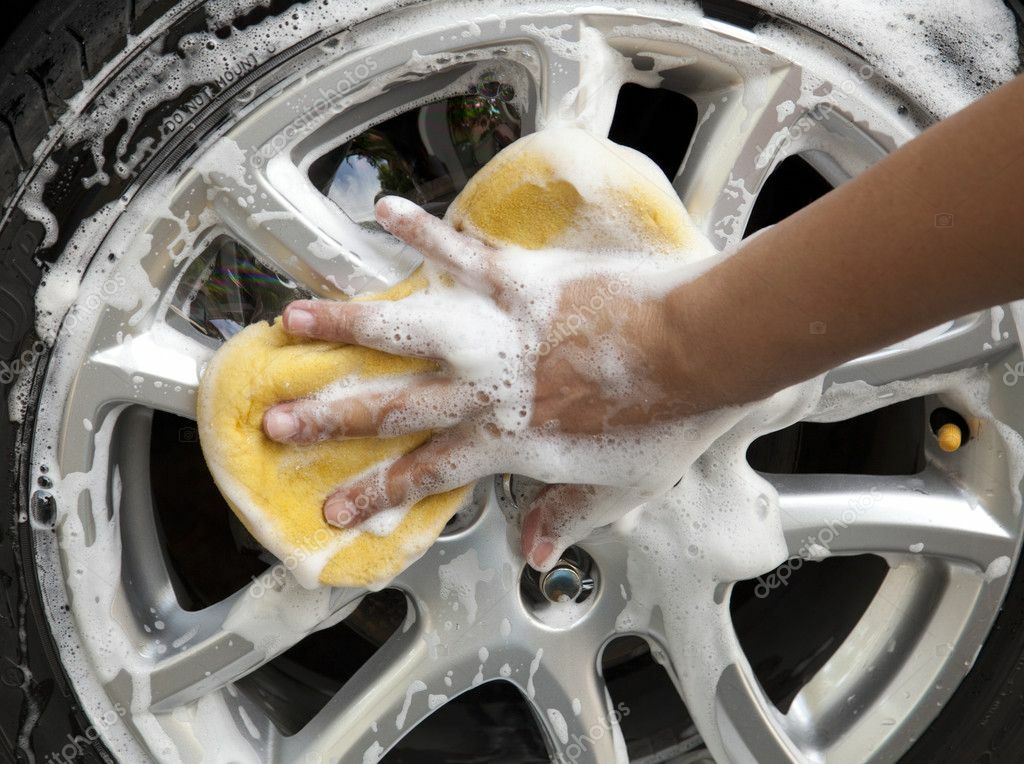 How to properly protect your car from corrosion, read here.
How to properly protect your car from corrosion, read here.
Step 4. Wax or car tire blackening agent applied to a wet surface will not do any good, so wipe the wheels with a terry cloth, preferably microfiber.
Step 5. After washing, apply wheel wax to dry surface. Wax will give the wheels a shine, protect against road dust, dirt, engine oil, tar, and reduce exposure to ultraviolet rays.
Step 6. If you don't stock up on rubber ink, you can color them with folk remedies. Shoe polish, shoe polish will not work, they will be washed away by the first rain. Buy regular glycerin at a pharmacy, mix 100 grams of glycerin with 100 grams of water, then apply with a sponge to the rubber. Do not spare water, otherwise dust will stick to the tires.
Tires are also blackened with silicone oil, which will save tires in cold weather, protect against cracks and sunlight that age rubber.
Laundry soap - the third way to blacken car tires. It can be crumbled into water, mixed, applied to the surface of the rubber and allowed to dry, after which the rubber will blacken thickly. The disadvantages of this method are that laundry soap dries the rubber, causing it to crack.
Tires can be washed with household chemicals - dish or glass cleaner. Tires will turn black, but the effect will not be long, but safe.
But we don’t recommend blackening rubber with Pepsi or Coca-Cola, because dust will stick to the tires due to sugar in the drink, and the “blackness” will be washed away after the first rain or puddle.
Car owners often have a question: “How to wash wheels correctly?”. After all, a car wheel is a complex automotive component on which safe and comfortable driving depends. By learning how to properly maintain wheels and tires, the driver will get rid of the occurrence of rust and extend the life of the wheels of his car.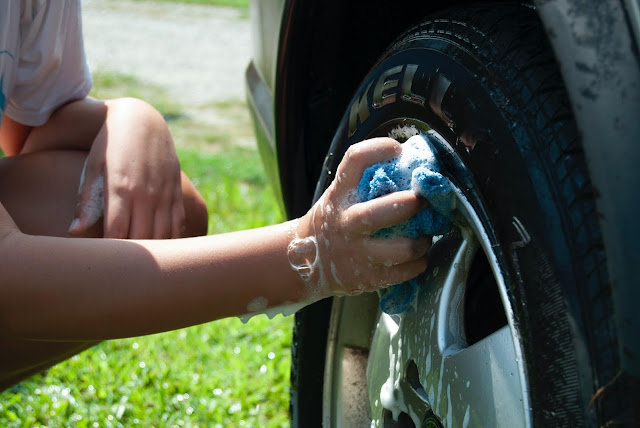 Let's figure out in this article how to wash the wheels in order to avoid unnecessary problems.
Let's figure out in this article how to wash the wheels in order to avoid unnecessary problems.
Quality tires in Khabarovsk can be purchased at the Shinapoint online store. On the site, you can choose the tires you need according to the desired parameters yourself or, by calling the phone, use the help of an operator-consultant.
When setting off, the car encounters all kinds of pollution of varying degrees on its way. The wheels are affected first. Among the most dangerous types of pollution, we can distinguish the following:
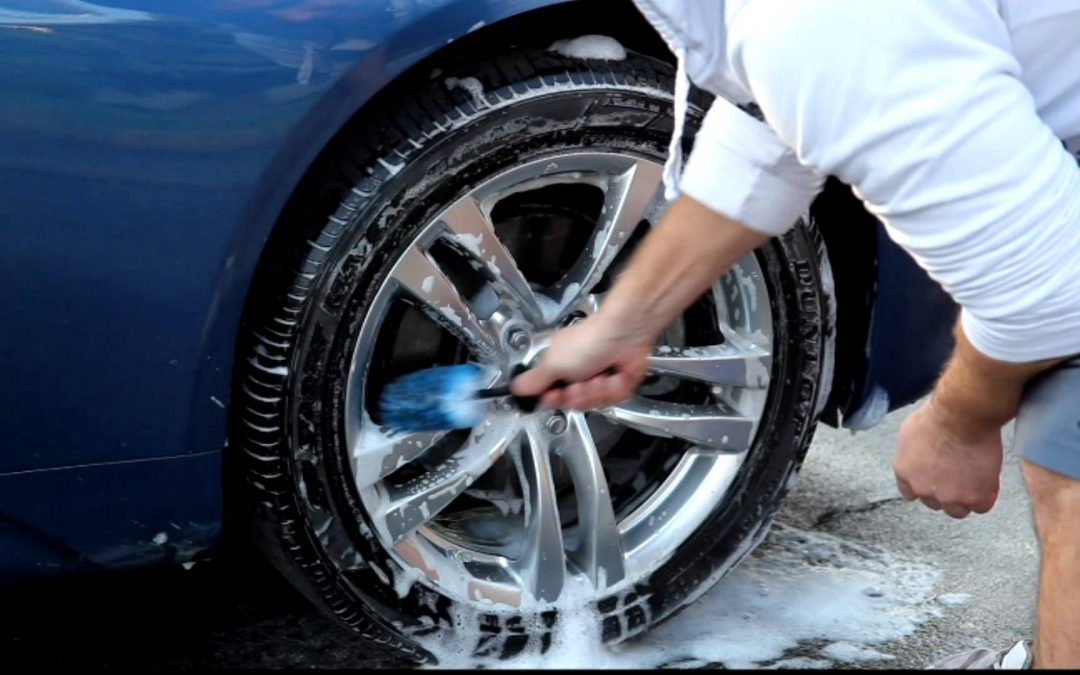
As you can see, there are different types of substances on the road, from which the wheels need to be cleaned regularly. Let's take a look at what problems can appear if you neglect the elementary rules of preventive wheel washing.
First you need to wash the wheels.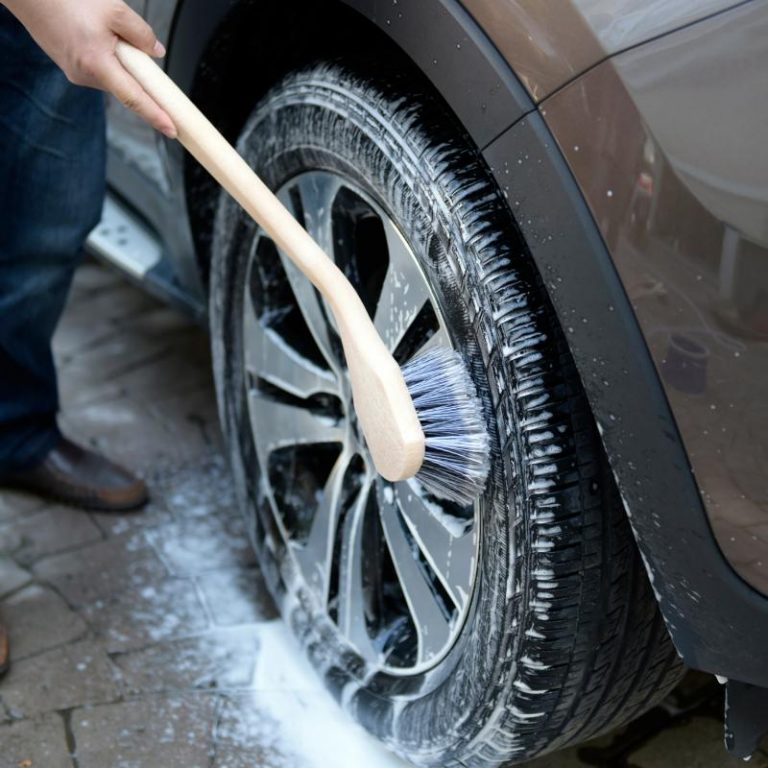
Make sure you use a separate bucket, sponges and cloths to clean the discs.
By using specially dedicated accessories, you will avoid the spread of aggressive contaminants throughout the surface of the car - in other words, you will not smear oil and reagents all over the car.
Discs can be easily washed using a high pressure hose or touchless wash. Use a soft brush to remove dirt and sand.
Please note that experts do not recommend the use of ultra-high pressure washers for washing cars and rims: this leads to rapid deterioration of the paintwork.
To remove chemical dirt, use special wheel shampoos, go to a car chemical or car cosmetics store and be sure to buy one. There are even separate chemicals for washing discs and tires on sale.
If possible, dry the wheels with compressed air, and definitely avoid driving in the cold season immediately after washing.
Tires should also be washed regularly.